Safety of Research Chemistry Laboratory Chapter 3 (I)
Date: 2022-01-19 Source: RUANQI Classification: Resources
#This series is translated from the safety guidance book on research chemistry laboratory printed by the chemical safety committee of the Joint Council of American Chemical Societies. It is the best practical guide for freshmen and sophomores#
Chapter III guidelines for chemical hazards
Introduction
Chemicals are the tools used by chemists to complete their work. When you read this chapter, you will begin to understand what chemical hazards are. A hazard is a potential source of danger or injury. If the chemical hazard is not found, an accident leading to personal injury and / or property damage will occur. Risk is the combination of the possibility of accidents, the severity of consequences and the frequency of exposure to hazards. The fact that a chemical may be inherently dangerous does not mean that we cannot use it in the laboratory. However, uncontrolled hazards bring greater risks, which is very dangerous. Interestingly, the usefulness of chemicals is often the risk of their use in the process, so chemists must learn how to safely use chemicals with significant internal hazards through the principle of ramp. Therefore, although many chemicals are harmful, most of them do not bring risks when used normally in our daily life, because we have learned how to identify hazards and minimize their risks.
If you take the initiative to talk to a chemist about chemical hazards, it is likely that you will hear at least one story about an occasion where that person must deal with the dangerous situation caused by chemical use. All chemicals have their inherent dangers and will cause harm if handled improperly. Chemists use many methods to reduce or control the risks associated with chemicals. In order to learn how to handle chemicals correctly, you must first be able to identify and understand the hazards.
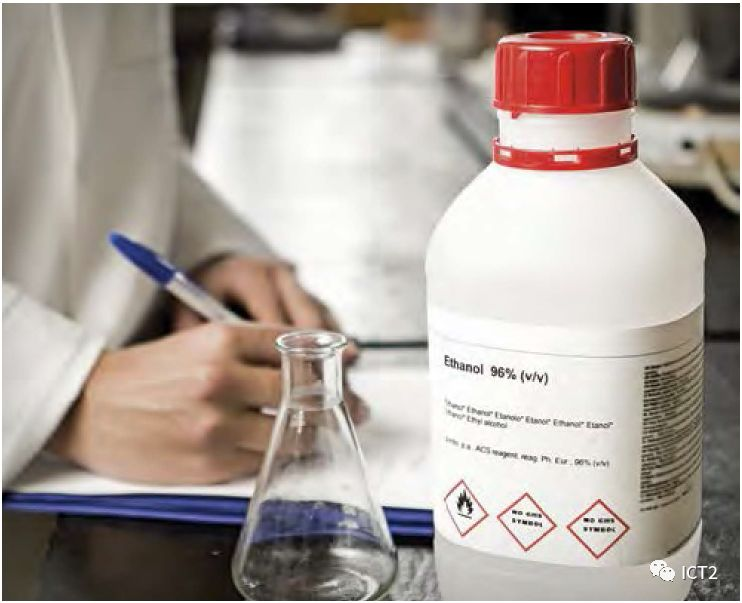
If an event is considered to be the most serious industrial accident in history (based on loss of life and suffering), it shows what may happen if the disaster is not properly managed. In December 1984, 40 tons of water reactive chemical methyl isocyanate (MIC) was stored in the large water tank of a non operating pesticide plant in Bhopal, India. When the water tank leaked, there was a violent reaction, and a toxic gas was released from the surrounding community. After the disaster, it is estimated that 3800 people died immediately, 15000 later died and 500000 were injured. This long-term impact still haunts the people of Bhopal 1. Water is a universal solvent and the basis of life on earth. We can't live without water. However, in the case of Bhopal, water mixed with water reactant mic, resulting in disaster.
The global harmonized system of classification and labelling of chemicals (GHS), implemented in the United States in 2012, is now used to define the physical, health and environmental hazards of each chemical produced or sold in the United States. There are many reasons for the development of GHS hazard classification system. The most important is to reduce the risks posed by chemicals in the workplace by improving the quality of known information and standardizing the way to inform workers of chemical hazards. It is the responsibility of manufacturers or importers to identify and report the hazards of each chemical they produce or sell. It is the responsibility of the user (you) to understand the information contained in the label and safety data sheet (SDS).
■ Signs or status quo
Can you recognize signs or symptoms of exposure?
The signs of exposure are external and therefore visible to others. They are objective and measurable in some cases. Some symptoms include urticaria, swelling, increased or decreased respiratory rate, sneezing, coughing and tears. These signs are usually temporary and disappear when the exposure source is removed.
The symptoms of exposure are manifested in the body, so they are not obvious or visible to others. They are subjective. Some symptoms are headache, dizziness and pain.
The Chemical Abstracts Service (CAS) under the American Chemical Society has registered more than 126 million kinds of chemical substances, and this number is significantly increasing by 2 every year. The National Toxicology Program is an organization that evaluates the health effects of chemicals. According to the plan, more than 80000 kinds of chemical agents are registered in the United States, and more than 2000 kinds will be added every year.
Only a small proportion of the chemicals used have been evaluated for their potential hazards 4. Among the chemical consumer goods we come into contact with in our daily life, the use level of consumers poses relatively few hazards to health. However, if no measures are taken to minimize the risk of exposure, workers using partially evaluated pure chemicals in the laboratory may be at greater risk.

Although this figure is not proportional, it shows that although there are millions of known chemicals, we are exposed to very few chemicals in our daily life, and few people have made a comprehensive assessment of the risks faced by humans. For example, suppose a circular Swimming Pool 24 feet high and 4 feet deep contains 13600 gallons of water, which represents 126 million known chemicals. In this volume, 8 gallons represent 80000 chemicals for commercial use. Only about 8 tablespoons or 1 / 2 cup of the entire tank capacity can represent 300 safety tested chemicals!
Each newly registered substance has a unique CAS registration number, and each substance has its own hazard characteristics. If you plan to prevent accidents when using chemicals in the laboratory, you need to start to understand and understand the dangerous characteristics of the chemicals you will use. In your introductory and organic chemistry laboratory, you will be exposed to dozens or more chemicals. How can you know the dangerous characteristics of so many different chemicals? The answer is: classification. The hazard characteristics of all chemicals can be divided into several categories:
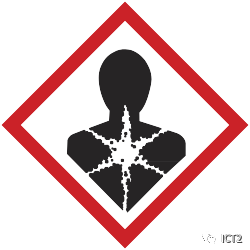
Let's look at the four major categories of chemical hazards: toxicity, flammability, corrosivity and reactivity. Some chemicals are harmful in only one way, while others are more than one. Many chemicals used in chemical laboratories are dangerous in at least one way, but the degree of danger is different - it can be large, small, or in between. For example, compare the physical hazards and flammability of gasoline and alcohol. Both are flammable liquids, but gasoline is much more dangerous. Gasoline is easier to ignite, burn or explode than alcohol, but we use gasoline safely every day. From this point, you should understand that we can and do know how to safely handle even dangerous chemicals.
■ In your future: greater danger
It is likely that the chemicals you are exposed to in the first chemical experiment class are carefully selected to ensure that the risk level of chemical science freshmen is acceptable, because the teachers have evaluated the risks of these experiments and minimized the risks. In advanced courses, undergraduate research and advanced chemical research, the hazards and risks of the chemicals you use may be greater. In all cases, any chemical can be used safely if the hazard is known and understood and minimized or eliminated.
Toxicity
Expose
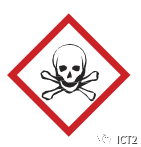
It has long been known that exposure to any sufficient amount of substance can be fatal. In the 16th century, Paracelsus, a military doctor and alchemist, wrote: "what is not a poison? Everything is a poison, and nothing is without poison. Only dose can make a thing not a poison." This means that the dose (or amount) of chemicals you are exposed to will determine the toxic effects you face.
■ Toxic substances
A toxic substance or poison is a chemical substance that can cause harm to organisms. Usually, toxic substances are called poisons, but this term has different meanings for different people and may be misunderstood. Chemists can define a poison as a chemical that changes the activity of the catalyst used in the reaction.
Some organizations, such as the U.S. Environmental Protection Agency (EPA), when the term "poison" must be in the pesticide label, make a specific definition according to each way of entering / contacting chemicals in LD50 (see the definition of "lethal dose" in "future: toxicology and regulatory provisions" at the end of this chapter).
Toxic substances of biological origin are called toxins.
Although any substance may cause harm to people who use it, there is a complex relationship between substance and everyone's physiological response. The study of the adverse effects of a substance on organisms and ecosystems is called toxicology.
As an organism, when a chemical enters your body, there are many factors that determine how you will react. It includes such factors as how chemistry enters your body (called entry route), the amount (dose) of the substance and the length of time you are exposed (time), the physical state (form) of the poison and many other factors, such as the gender of the exposed person, the stage of the reproductive cycle, age, lifestyle, previous sensitivity, influencing organs, allergic factors and personal genetic personality - just a few. These factors can affect the severity of exposure.
Toxic effects can be direct or delayed, reversible or irreversible, local or systemic. The toxic effects are mild and reversible: for example, headache caused by one inhalation of ethyl acetate vapor (which will disappear after inhaling fresh air), but also serious and irreversible: for example, birth defects caused by excessive exposure to nicotine during pregnancy, or cancer caused by excessive exposure to formaldehyde.
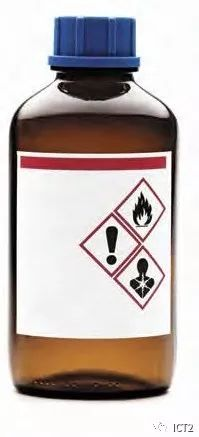
In addition to allergic reactions, the toxic effects of exposure to chemicals depend on the severity of exposure (remember Paracelsus). Generally speaking, the greater the scope or frequency of contact, the more serious the consequences. Therefore, you can reduce or even avoid injury and keep contact to a minimum.
Now, let's take a closer look at some of the factors mentioned above, which determine the negative effects of exposure to chemicals on you.
Access / exposure routes
The way a chemical enters the human body, called the entry / exposure pathway (ROE), usually determines other factors of exposure. In addition, it is important to know how a chemical enters your body to protect yourself from exposure, because your risk can be reduced by eliminating or minimizing each exposure route.
There are four ways for chemicals to enter the human body:
Inhale:A chemical substance enters the human body through the respiratory tract through breathing. This substance can exist in the form of steam, gas, smoke, mist or dust. This is considered the most common roe in chemical laboratories.
Ingestion:A chemical substance enters the digestive tract through the mouth. People are unlikely to intentionally ingest chemicals in the laboratory, and there are basic rules to prevent accidental ingestion of chemicals in the laboratory. Chemicals exposed through this route can be eaten, chewed gum, applied cosmetics, smoked in the laboratory (the problem is not as serious as before), or ate lunch without washing hands after working in the laboratory. This roe is eliminated by banning eating and drinking in the laboratory.
Absorb:When a chemical comes into contact with the skin, the skin may absorb the chemical. Absorption of chemical vapors can also occur through the eyes and mucous membranes.
Infuse:Chemicals enter the human body through wounds on the skin caused by sharp contaminated objects. Possible situations include improper handling of the sharp part of the edge of the contaminated broken glass beaker, or misuse of sharp objects, such as knives or hypodermic needles.
■ Target organ
These organs (kidney, liver, skin, eyes, etc.) or systems (respiratory system, central nervous system, etc.) may be adversely affected by chemicals.
Poisons or toxins are usually named after the organs or systems in which they "act". For example, hepatotoxin (liver), neurotoxin (nervous system), hematopoietic toxin (blood system), nephrotoxin (kidney), mutagen (genetic material) and teratogen (embryo).
Dose
For chemicals, dose is defined as the amount of poison received at one time. Doses are usually reported in amounts per body weight, such as milligrams per kilogram (mg / kg); Body weights were standardized for comparison with other dose reports. However, the dose may report other routes of exposure in other ways. For example, skin or dermal doses are usually reported in quantities per skin surface area, such as milligrams per square centimeter (mg / cm2). Airborne dose usually refers to the reported quantity of air (concentration) per unit volume in a given time, such as micrograms per liter (µ g / L), milligrams per cubic meter (mg / m3), or one millionth (PPM).
Time and frequency of contact
The health effects of poisons can be described by exposure time and the beginning of action.
Acute exposure is characterized by rapid absorption of toxic substances in one or more doses within 24 hours or less. Usually, the impact is sudden and local. It may be painful, serious or even fatal. Generally, one exposure to high concentration environment (see the definition of "lethal dose" in "future: toxicology and regulatory provisions" at the end of this chapter)
The effects of acute exposure are often reversible. For example, if you inhale a toxic substance, you immediately have difficulty breathing, but when you leave the room for fresh air, your breathing returns to normal, which will be described as acute exposure, resulting in acute effects. However, if a toxic substance enters your blood and causes a systemic effect on another organ, this effect may not appear immediately. In this case, acute exposure may have delayed effects or chronic (long-term) effects.
Chronic exposure is characterized by repeated exposure, usually at low doses, with duration in months or years. The effects of exposure may not appear immediately (latent) and are usually irreversible.
Pharmacokinetics is the study of how the human body handles substances it comes into contact with. Once this substance enters the human body, it will undergo a clear process: absorption, distribution, metabolism and excretion (called ADME). The rate and location of absorption, the organ to which the substance is distributed, how (or not) metabolized (transformed into other substances), what metabolites are formed and the rate of excretion will affect the toxicity of the substance to the individual.
Chemicals known to cause toxic effects
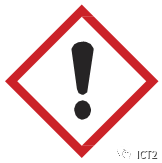
Synergy occurs when two (or more) chemicals combine to produce more adverse effects than expected. An example of synergy is exposure to alcohol and chlorinated solvents: alcohol increases the toxicity of chlorinated solvents. The opposite is also possible: one toxic substance can reduce the effect of another substance and produce antagonistic effect. There are several confrontation mechanisms. An example of antagonism is the use of ethanol as an antidote to methanol intake. Methanol metabolites are toxic, but methanol can be excreted because ethanol is preferentially metabolized.
Allergens are substances that produce immune responses that you may encounter in the laboratory. Allergens can cause respiratory asthma or contact dermatitis (eczema). Not everyone is sensitive to allergens. If a chemical causes an allergic reaction in a large number of people, it is called a sensitizer. The reaction to poison Pueraria is allergic reaction. Common sensitizing chemicals in chemical laboratories include nickel, sulfur and its compounds, salicylates (aspirin and Holly), formalin (formaldehyde) and latex (less used at present). If you know or suspect that you may be allergic to chemicals used in the laboratory, tell your mentor - another reason why you should read the experimental procedures before you come to the laboratory.
Tear agent is a kind of chemical substance, which will cause a lot of tears in the eyes due to its far-reaching impact on the lacrimal gland. If you have cut onions, you may be familiar with one of the substances (1-sulfoxide propane). Tears are a biological reaction that attempts to dilute irritants. Except in the most serious cases, in all cases, the effect of tear agents will not cause permanent damage to the eyes. If a chemical is a tear agent, it should be indicated on the label and SDS. Goggles don't necessarily prevent steam from causing a reaction. You can only use these substances in the fume hood of the laboratory. The glassware shall be washed in the fume hood before being taken out and put into the sink. You should wash your hands at the end of your laboratory work, but when you have been using these chemicals, washing your hands is particularly important to ensure that these chemicals do not touch your eyes.
Organic solvents can penetrate intact skin and are easy to inhale. Therefore, in addition to flammability hazards, they also have health hazards. Many organic solvents can penetrate intact skin and are easily inhaled when volatile enough. Therefore, in addition to the flammability hazards caused by these solvents, they also pose health hazards. When in contact with skin, most organic solvents can cause skin dryness and cracking. The vapors of all organic solvents are toxic, and some are more toxic than others. Typical symptoms and signs of excessive exposure to organic solvent vapors include headache, dizziness, slurred speech, changes in breathing or heart rate, unconsciousness, and very few deaths. The typical target organs affected by organic solvents are the central nervous system, liver and kidney. Avoid skin contact with these fluids. The use of organic solvents should be carried out in the ventilation hood of the laboratory to maintain the vapor in the inhaled air at an acceptable level. Gloves must be carefully selected to ensure adequate protection.
Heavy metals have many known toxicological effects. You may also encounter mercury. Elemental mercury leaked from a broken calorimeter (if your laboratory still uses a mercury calorimeter) or a pressure gauge used to measure the pressure in a chemistry laboratory. Due to the harm of mercury, more and more academic laboratories are replacing mercury containing equipment with safer alternatives. Mercury is a cumulative neurotoxic substance. Exposure can be caused by skin absorption and inhalation of vapors. When mercury spills, uncontrollable water droplets will form, some of which are too small to be seen by the naked eye. Leaking mercury must be thoroughly cleaned immediately by properly trained personnel using specialized equipment and testing methods. If your mercury thermometer is broken or you see it broken, inform your teacher immediately.
Asphyxiating agent is a substance that can make the body lack oxygen. A simple asphyxiating agent (such as nitrogen) will replace or dilute the oxygen in the air to a level incompatible with life. Chemical asphyxiating agents (such as carbon monoxide) or prevent the human body from using oxygen in the air, or destroy the oxygen transmission of the human body.
Reference
1 Broughton,E. The Bhopal Disaster and Its Aftermath: A Review. Environ. Health. 2005, 4,6. http://dx.doi.org/10.1186/1476-069X-4-6
2 ChemicalSubstances – CAS REGISTRY. A Division of the American Chemical Society. www.cas. org/content/chemical-substances(accessed March 6, 2017).
3 AboutNTP, National Toxicology Program, U.S. Department of Health and Human Services. http://ntp.niehs.nih.gov/about/index.html (accessed March 6, 2017).
4 Fischetti M. The GreatChemical Unknown: A Graphical View of Limited Lab Testing. Scientific American,Nov 1, 2010.




